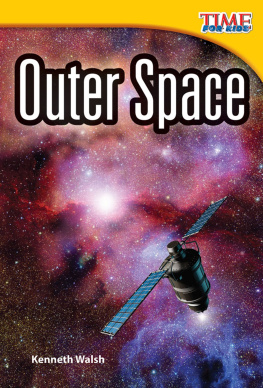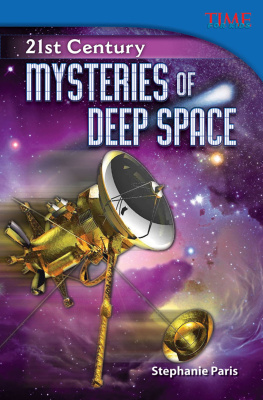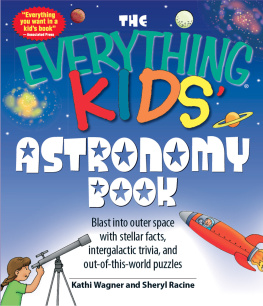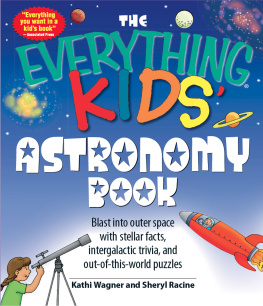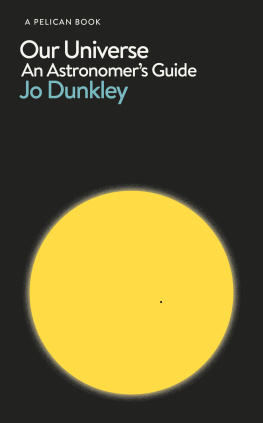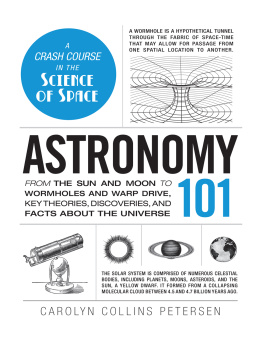
Outer Space Walsh
TCM 14632
Level 2.6
Word Count: 606
Reading Level Correlations:
Early Intervention Level 20
Guided Reading Level L
DRA Level 28
Lexile 670L
What do you know about
stars, galaxies, comets,
planets, and the sun?
Become a space explorer, and
take a trip to the ends of
the universe. Who knows
how far you can go?
Outer Space
Outer Space
Kenneth Walsh


Image Credits
Cover: Ordus/iStockphoto; p.4 keren-seg/Shutterstock; p.5 Stephen Firmender/Shutterstock; p.6 David
M. Schrader/Shutterstock; p.8 Babak Tafreshi/Photo Researchers, Inc.; p.9 Chris Wahlberg/Getty Images;
p.10 Rick Whitacre/Shutterstock; p.11 top: NASA/JPL-Caltech; p.11 bottom: NASA/JPL-Caltech/NOA O;
p.12 NASA/JPL-Caltech/R. Hurt (SSC), p.12 Allen WorldWide/Shutterstock; p.13 Horiyan/Shutterstock;
p.14 Konstantin Mironov/Shutterstock; p.15 Jerry Lodriguss/Photo Researchers Inc. and 2MASS Project/
NASA/Photo Researchers Inc.; p.16 NASA Jet Propulsion Laboratory (NASA-JPL); p.17 European Southern
Observatory/Photo Researchers Inc. and STSCI/NASA/Photo Researchers Inc.; p.19 xfox0/Shutterstock;
p.20 top: Halley Multicolor Camera Team, Giotto Project, ESA; p.20 bottom: BrandonHot/Shutterstock;
p.21 BSIP/Photo Researchers, Inc.; p.22 NASA/JPL-Caltech; p.23 top: Engraved by Beyssent from a drawing
by Mlle. CI.Reydellet/Mary Evans Picture Library; p.23 bottom: oriontrail/Shutterstock; p.24 NASA/
www.nasa.gov; p.25 martiin/uidworkshop/Shutterstock; p.26 top: Neo Edmund/Shutterstock; p.26
bottom: NASA/www.nasa.gov; p.27 NASA/www.nasa.gov; p.28 Rafael Pacheco/Shutterstock; back cover:
BrandonHot/Shutterstock; background: lem/Shutterstock
Based on writing from TIME For Kids.
TIME For Kids and the TIME For Kids logo are registered trademarks of TIME Inc.
Used under license.
Teacher Created Materials
5301 Oceanus Drive
Huntington Beach, CA 92649-1030
http://www.tcmpub.com
ISBN 978-1-4333-3632-4
2012 Teacher Created Materials, Inc.
Reprinted 2013
Consultant
Timothy Rasinski, Ph.D.
Kent State University
Publishing Credits
Dona Herweck Rice, Editor-in-Chief
Robin Erickson, Production Director
Lee Aucoin, Creative Director
Conni Medina, M.A.Ed., Editorial Director
Jamey Acosta, Editor
Stephanie Reid, Photo Editor
Rachelle Cracchiolo, M.S.Ed., Publisher
Synched Read-Along Version by:
Triangle Interactive LLC
PO Box 573
Prior Lake, MN 55372
ISBN-13: 978-1-68444-801-2 (e-book)

Table of Contents
Twinkle, Twinkle ........................................
Outer Space .................................................
Galaxies ...................................................... 10
Stars ............................................................ 14
The Sun .....................................................
Asteroids, Comets, and Meteors ............
Planets ........................................................ 24
People and Outer Space ..........................
Glossary ...................................................... 28

Twinkle, Twinkle
Twinkle, twinkle little star , do you
know just where you are?

Outer Space
If you are a star, you are somewhere
in outer space . What is outer space? Is it
everything far into the sky?

Yes, outer space is the huge space
that holds everything there is beyond
Earth, from the smallest speck to the
largest galaxy .
Our Universe
Universe is a word for
everything in space,
including Earth.

Outer space is huge. It is so big that
it has not stopped growing! We cannot
reach the edge of space because the ends
keep growing outward.
Imagine if you never stopped
growing!

When we think of outer space, we
usually think of everything far out in the
sky and beyond. We think of galaxies,
stars, and comets . We think of planets
and the sun. All of these things are part
of outer space.
Astronomers
Scientists who observe
and study outer space and
everything in it are called
astronomers .

Galaxies
Galaxies are made of groups of stars,
gas, and dust that are held together by
gravity .
There are billions of galaxies in
outer space. Earth is part of the
Milky Way Galaxy .
The Milky Way

Millions and Billions
A million is 1,000,000. A billion is
1,000,000,000. There are millions of
stars in some galaxies and billions of
stars in others. There are more than
billion stars in the Milky Way. It
would take 3,000 years to count them!
Spitzer Space Telescope
How do we learn about outer space?
One way is to look through powerful
telescopes, like the Spitzer Space
Telescope. The Spitzer is a satellite
orbiting in space and taking pictures for
us. Here is one of the photos it took.

